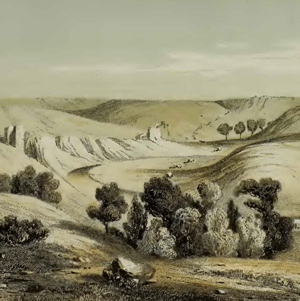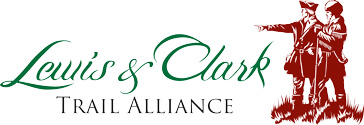The American portraitist, artist and illustrator John Mix Stanley (1814-1872), served as one of the official artists with the Stevens railroad survey party to the Northwest. His record of highlights along the route often combined documentary verisimilitude with romantic fantasy.
Featured Artwork


The two captains “strolled out to the top of the hights in the fork of these rivers,” from which they had “an extensive and most inchanting view.”
Larocque at Fort Mandan
by Joseph A. Mussulman

In the fall of 1804, Larocque’s job was to take a supply of North West Company merchandise to the Mandan and Hidatsa villages and trade for furs. While there, he asked the captains if he could join the expedition.
Bison Gallery
Art featuring the iconic buffalo



Bitterroot Valley businessman John Owen counted no Lolos among the customers he dealt with at Fort Owen, but he occasionally hired one as a trail-hand.


Clark described the Cascades as having a “Great Shute” where the Columbia dropped about twenty feet over both large and small rocks, “water passing with great velocity forming & boiling in a most horriable manner.”


Creeping down the nearly imperceptible slope of the northern high plains, this is the stream Lewis and Clark described as possessing a peculiar whiteness, being about the colour of a cup of tea with the admixture of a tablespoonfull of milk.


The continuation of the Northern Nez Perce Trail led from their camp at Travelers’ Rest to the plains near the Great Falls of the Missouri, saving hundreds of miles from the expedition’s 1805 route.


“These Springs are very beautiful to See, and we think them to be as good to bathe in &c. as any other ever yet found in the United States,” avowed Private Joe Whitehouse.


For more than a hundred years the American bison has been enshrined as a symbol of the American West in the first line of a song known around the world, “Home on the Range.”


In 1798 a German actor-playwright-turned-printer named Alois Senefelder (1771-1834) discovered the principle of lithography, relying upon simple chemical principles—the mutual repulsion of oil and water, and the mutual attraction of water and salt.


The Bears Tooth was an important landmark on the the ancient Indian road that has come to be known as the Old North Trail. It was included on Nicholas King’s 1804 map, and the captains expected to find it.
Experience the Lewis and Clark Trail
The Lewis and Clark Trail Experience—our sister site at lewisandclark.travel—connects the world to people and places on the Lewis and Clark Trail.
Discover More
- The Lewis and Clark Expedition: Day by Day by Gary E. Moulton (University of Nebraska Press, 2018). The story in prose, 14 May 1804–23 September 1806.
- The Lewis and Clark Journals: An American Epic of Discovery (abridged) by Gary E. Moulton (University of Nebraska Press, 2003). Selected journal excerpts, 14 May 1804–23 September 1806.
- The Lewis and Clark Journals. by Gary E. Moulton (University of Nebraska Press, 1983–2001). The complete story in 13 volumes.


